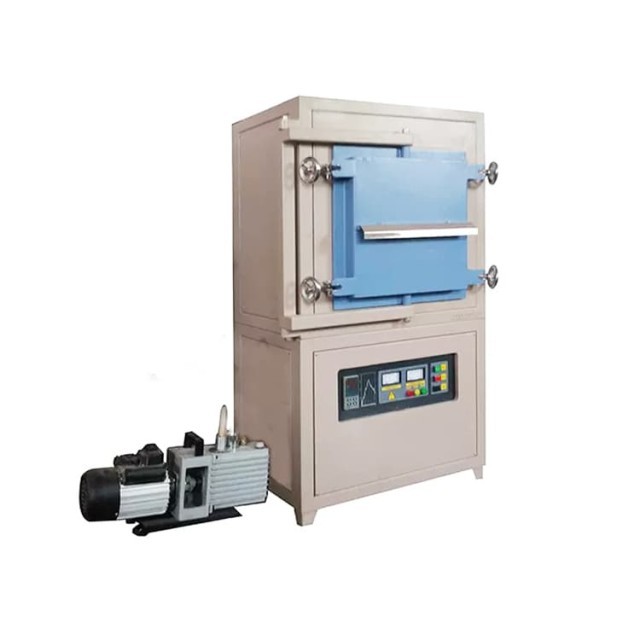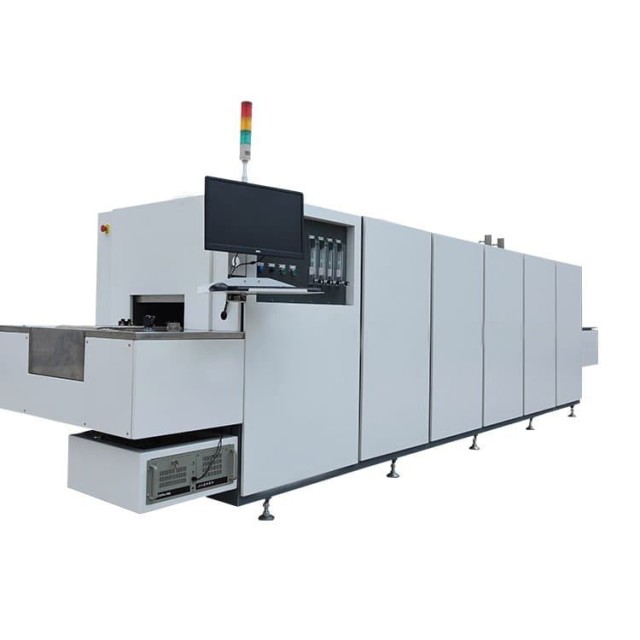Importance of Furnace Atmosphere Control
Furnace atmosphere control is essential to ensure that heat treatment processes are carried out effectively. Inert atmosphere gases such as nitrogen, argon, and helium play a vital role in controlling the furnace atmosphere. These gases help to prevent oxidation of the material being heated, which can cause discoloration or scaling. Measuring and sampling furnace atmosphere is also an important aspect of furnace atmosphere control, as it helps to ensure that the appropriate gas mixture is being used. Overall, the use of an inert atmosphere furnace is critical in achieving high-quality heat treatment results.
Table of Contents
- Importance of Furnace Atmosphere Control
- Inert Atmosphere Gases and Their Significance
- What is an Inert Atmosphere Furnace?
- Heat treatment processes that require inert atmosphere furnace
- The Importance of Furnace Atmospheres
- Environmental Benefits of Using Furnace Atmospheres
- Conclusion: Environmental Benefits of Using an Atmosphere Furnace
Inert Atmosphere Gases and Their Significance
Inert atmosphere furnaces are designed to provide a controlled environment for high-temperature processing of materials. Inert gases such as nitrogen, argon, and helium are commonly used in atmosphere furnaces to create a non-reactive environment. This environment can prevent oxidation and other chemical reactions that may occur when materials are exposed to air.
Nitrogen and Its Significance
Nitrogen is the most commonly used inert gas in atmosphere furnaces. It is an odorless, colorless, and tasteless gas that makes up about 78% of the Earth's atmosphere. Nitrogen is used in atmosphere furnaces to provide a non-reactive environment and prevent oxidation and other chemical reactions. It is also used for processes such as carburizing and nitriding.
Argon and Its Significance
Argon is another commonly used inert gas in atmosphere furnaces. It is an odorless, colorless, and tasteless gas that makes up about 1% of the Earth's atmosphere. Argon is used in atmosphere furnaces to provide a non-reactive environment and prevent oxidation and other chemical reactions. It is also used for processes such as annealing and brazing.
Helium and Its Significance
Helium is used in atmosphere furnaces to provide a non-reactive environment and prevent oxidation and other chemical reactions. It is also used for processes such as welding and heat treating.
Inert gases are important in atmosphere furnaces because they provide a non-reactive environment that can prevent oxidation and other chemical reactions that may occur when materials are exposed to air. This can help to reduce the need for harsh chemicals that may be required to remove oxidation or other unwanted byproducts from the materials being processed. In addition, the use of inert gases can lead to energy savings and lower emissions.
In conclusion, the use of inert atmosphere gases in atmosphere furnaces is essential for high-temperature processing of materials. Nitrogen, argon, and helium are commonly used in atmosphere furnaces to provide a non-reactive environment and prevent oxidation and other chemical reactions. This can lead to energy savings, lower emissions, and reduced need for harsh chemicals.
What is an Inert Atmosphere Furnace?
An inert atmosphere furnace is a type of laboratory equipment that is specifically designed for materials processing and heat treatment under controlled atmospheric conditions. The term "inert" refers to a gas environment that contains no reactive components that can interfere with the material being processed. The most commonly used inert gases in atmosphere furnaces are nitrogen, argon, and helium.

How Does an Inert Atmosphere Furnace Work?
Inert atmosphere furnaces function by creating an environment that prevents the material being processed from coming into contact with reactive gases that can cause unwanted oxidation or other chemical reactions. Typically, a little vacuum is created using a rotary vane oil-filled vacuum pump, then an inert gas such as argon or nitrogen gas is purged through the furnace. The material, typically metals and ceramics, is then surrounded by the inert gas, which prevents oxide formation.
Environmental Benefits of Using an Inert Atmosphere Furnace
Using an inert atmosphere furnace provides significant environmental benefits, as it reduces the carbon footprint of the laboratory equipment. Inert atmosphere furnaces prevent oxidation and reduce waste, ensuring that the laboratory equipment is operating efficiently. By using an inert atmosphere furnace, the laboratory is able to reduce its carbon footprint by reducing waste and minimizing the amount of energy used during manufacturing processes.
Applications of Inert Atmosphere Furnaces
Inert atmosphere furnaces are used to carry out processes such as annealing, brazing, and heat treatment of materials that are prone to oxidation. In the powder bed fusion process, an inert atmosphere is essential to ensure that the metal parts being built do not become contaminated by air molecules that can change the chemical and physical properties of the final components.
KINTEK's Inert Atmosphere Furnaces
KINTEK is a leading atmosphere furnace manufacturer in China that makes these furnaces in different working temperature ranges (1100°C, 1300°C, and 1600°C) and heating zone sizes. Each inert gas furnace is supplied with a rotary vane vacuum pump and the unit is fitted with gas inlet and outlet valves, gas flow meter, and dial-type pressure gauge.
In conclusion, inert atmosphere furnaces are essential tools in laboratory equipment as they help ensure that the products produced are of high quality and environmentally friendly. An inert atmosphere furnace creates an environment that prevents the material being processed from coming into contact with reactive gases that can cause unwanted oxidation or other chemical reactions.
Heat treatment processes that require inert atmosphere furnace
Heat treatment processes are crucial in the manufacturing of metal products such as automotive components, aerospace parts, and medical devices. Some of these processes require an inert atmosphere to achieve high precision, repeatable results.
Why is an inert atmosphere important?
The atmosphere in a heat treatment process can be a critical factor. It may act as a carrier for key elements in the process or protect the part being heat treated from the effects of exposure to air while also exposed to substantially elevated temperatures. As a protective atmosphere, its task is to protect the surface of the part from chemically reacting with harmful elements in the atmosphere. Depending on the heat treatment process being performed, the lack of a controlled protective atmosphere could lead to chemical reactions on the surface of a part that would compromise its quality and performance, leading to rejected parts.
Heat treatment processes that require inert atmosphere furnace
Heat treatment processes such as bright annealing, sintering, and carbonitriding require a highly controlled atmosphere to be successful. Bright annealing is performed in an inert atmosphere of nitrogen, hydrogen, or argon to limit oxidation. Pure hydrogen is usually the preferred atmosphere. Sintering, depending on the metallic compounds being sintered, uses either an inert/protective atmosphere or a hydrogen atmosphere. Carbonitriding, on the other hand, involves the diffusion of carbon and nitrogen atoms into the surface of a metal to increase hardness, and nitrogen is usually added to the endothermic atmosphere. Nitriding, used to increase both corrosion resistance and hardness, involves heating metal in the presence of nitrogen (usually in the form of ammonia). Neutral hardening is used to prevent oxidation and decarburization in tool steels by using an inert or protective atmosphere such as nitrogen or argon.
The Importance of Furnace Atmospheres
Furnace atmospheres play a critical role in achieving the desired results during the heating process. Generally, these conditions are used for two purposes: to preserve and safeguard the material from surface reactions, making it chemically inert or protective, and to enable the material’s surface to change during the process for it to be chemically active or reactive. Researchers must understand how pertinent creating a specific atmosphere is for a successful material fabrication of the heat-treating process and why that certain environment is used.
Common Types of Furnace Atmospheres
Various types of controlled atmospheres are used for different purposes. You’ll need to consider your goal of the heating process to determine which type is best for heating metal or steel materials.
Endothermic Atmospheres
The protective gases used in furnace atmospheres are usually a mixture of hydrogen, nitrogen, carbon dioxide (CO2), carbon monoxide (CO), and trace amounts of water. The necessary gases are either injected directly into the furnace as a nitrogen and methanol (CH4) mixture or via an endothermic generator using propane or natural gas as the source for carbon.
Atmosphere Classifications
The American Gas Association developed a set of classifications for furnace atmospheres. The classifications that are relevant to the atmospheres discussed here include:
- Class 200: prepared nitrogen base with water vapor and carbon dioxide removed
- Class 300: endothermic base formed by the reaction of a fuel gas and air mixture in a heated chamber filled with an appropriate catalyst
- Class 600: ammonia-based
Containing an Atmosphere
The challenge in using a protective atmosphere in a heat treatment furnace lies in containing the atmosphere and requires the use of an atmosphere-controlled furnace. Establishing an atmosphere begins with purging the furnace of its existing atmosphere using the desired gas. There are two different types of furnaces that are designed to contain the atmosphere once it has been established: one focuses on sealing the gas in, while the other makes use of a retort.
Purge and Seal
The sealing approach involves a door seal and welded (or double-welded) case seams. The door seal usually takes the form of brick-to-brick or fiber-to-fiber with a woven gasket comprised of ceramic fiber.
Natural Gas Furnace with Atmospheric Controls
This immense machinery is constructed from a continuously welded shell of plate steel and structural joists with high-performance ceramic fiber blanket insulation installed in the walls and roof of the furnace. Silicon carbide rods are used to heat the internal furnace, which is lined with refractory plates that are suspended above the high-thermal heating elements.
Conclusion
In conclusion, furnace atmospheres are an essential component of heat treatment processes for materials such as metal and steel. By understanding the critical role furnace atmospheres play in achieving the desired results during the heating process, researchers can select the appropriate atmosphere classification and type of furnace to use. This will ensure that the material is preserved, safeguarded, and chemically altered in a controlled environment, leading to the successful fabrication of the desired product.
Environmental Benefits of Using Furnace Atmospheres
One of the environmental benefits of using furnace atmospheres is the reduction in the need for hazardous chemicals and toxic substances that are commonly used in traditional heat-treating processes. By using the correct atmosphere, the furnace can achieve the same level of heat-treating results without having to rely on dangerous chemicals. This results in a safer and more environmentally friendly process. Additionally, using furnace atmospheres can reduce energy consumption and emissions, as the furnace can be programmed to only use the necessary amount of energy required to achieve the desired results.
In conclusion, furnace atmospheres play a crucial role in the heat-treating process, and they offer various benefits, including environmental sustainability, reduced energy consumption, and increased efficiency. By utilizing the correct atmosphere, manufacturers can achieve the desired results while reducing their impact on the environment.
Conclusion: Environmental Benefits of Using an Atmosphere Furnace
In conclusion, using an atmosphere furnace provides significant environmental benefits. Inert atmosphere gases such as nitrogen and argon are used in the furnace to reduce the need for the use of toxic chemicals in the heat-treating process. This leads to a reduction in hazardous waste generated, which is better for the environment. Additionally, atmosphere furnaces are highly efficient and consume less energy, thus reducing carbon emissions. In summary, utilizing an atmosphere furnace for heat treatment processes not only provides high-quality results but also promotes a more sustainable and environmentally friendly approach to manufacturing.
Related Products
- Controlled Nitrogen Inert Hydrogen Atmosphere Furnace
- 1200℃ Controlled Atmosphere Furnace Nitrogen Inert Atmosphere Furnace
- Vacuum Heat Treat and Pressure Sintering Furnace for High Temperature Applications
- Non Consumable Vacuum Arc Induction Melting Furnace
- Vacuum Heat Treat Sintering Brazing Furnace













